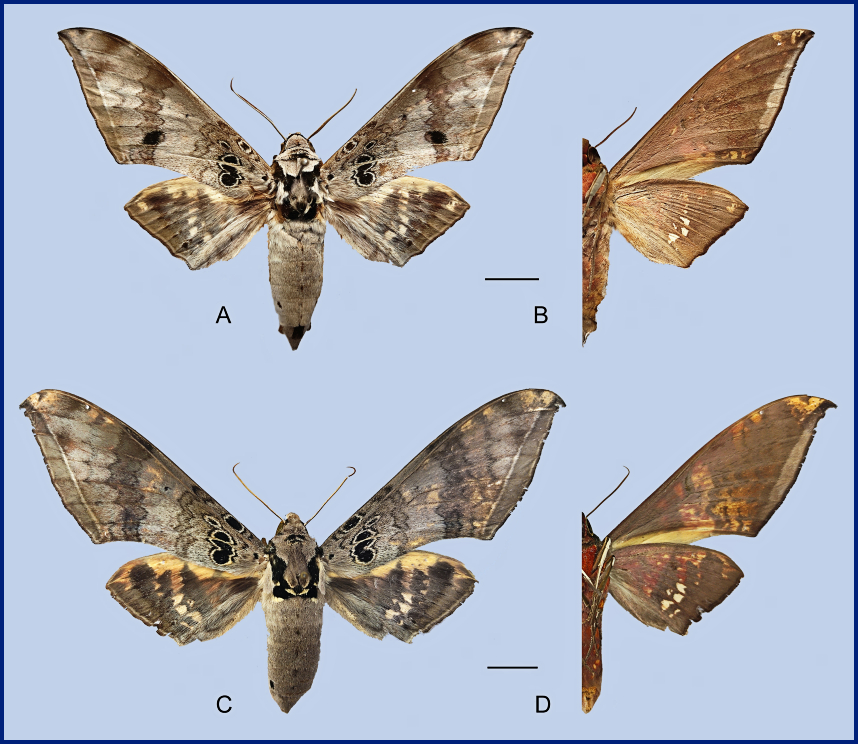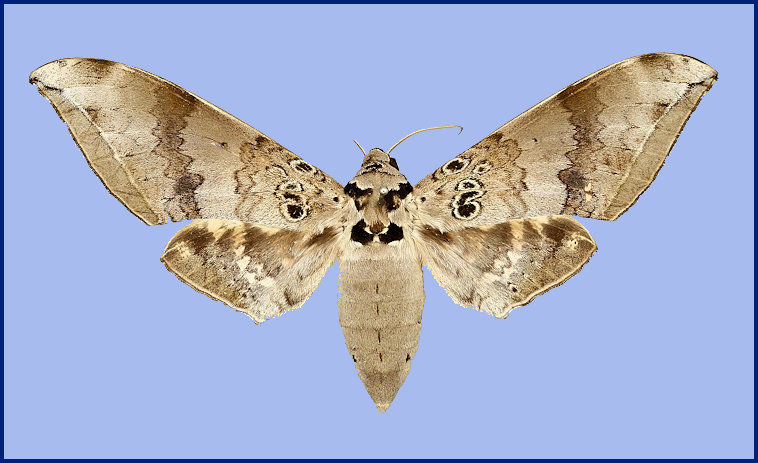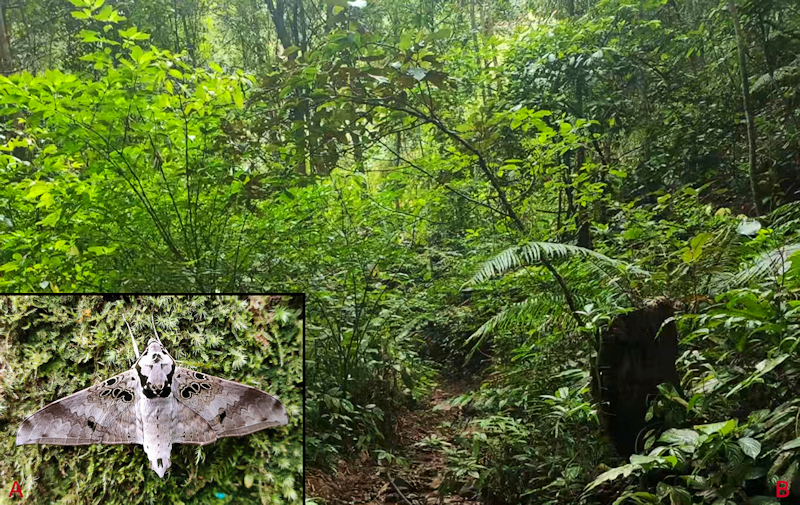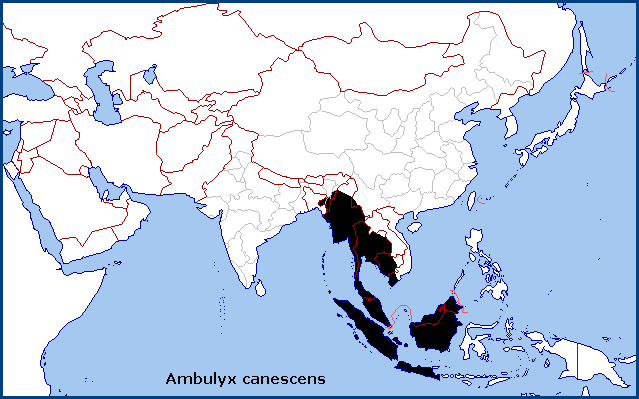

Basiana canescens Walker, [1865], List of the specimens of lepidopterous insects in the collection of the British Museum 31 (suppl.): 38. Type locality: Cambodia.
Synonym. Basiana canescens Walker, [1865].
Synonym. Ambulyx argentata Druce, 1882.
Synonym. Oxyambulyx canescens (Walker, [1865]) Rothschild & Jordan, 1903.
Note. Transferred to Oxyambulyx by Rothschild & Jordan, 1903, Novit. zool. 9 (suppl.): 194 (key), 205. Transferred to Ambulyx by Holloway, 1987, Moths of Borneo 3: 132.
Wingspan: 98-110mm. Male. Cinereous-brown. Body hoary above. Head with a broad blackish brown band in front of the base of the antennae. Palpi deep red, brown towards the tips, which are hoary. Thorax with a blackish brown stripe on each side. Pectus deep red in front. Abdomen with a brown spot on each side of the sixth segment. Forewings acute, falcate, with five transverse zigzag blackish lines; a few blackish streaks between the first line and the base; a cinereous band between the second and third lines, broader towards the costa and including a blackish point; a ferruginous space between the fifth line and a cinereous submarginal line, which is not parallel to the exterior border; a testaceous spot on the costa by the fifth line and a testaceous brown-dotted apical patch; underside with several testaceous marks, which are towards the tips or near the interior angle. Hindwings with some pale testaceous marks near the interior border (Walker, [1865]).
Greyer than Ambulyx moorei, a species with which it shares the presence of a pair of ocellate marks subapically on the abdomen instead of a narrow line dorsally. Ambulyx canescens also bears stronger subbasal markings on the forewing and a stronger green edging to the thorax. Forewing upperside ground colour greyish; discal spot distinctive; subbasal marking distinctive, although resembling that in Ambulyx moorei. Hindwing upperside colouring broadly the same as in the forewing; bearing distinctive pale patches. Tergum A8 deeply sinuate mesally; edge of tergum very oblique (Sphingidae Taxonomic Inventory, 2021).
Uncus longer than in other species of Ambulyx, broad and incised at apex; curved slightly in lateral view. Gnathos triangular and sharply pointed in ventral view. Harpe distinctive, connected with body of valva only at base; very long and slightly twisted; apical third suddenly narrows and bent dorsally. Phallus with concave, toothed, apparently moveable apical process; ventrally with patch of denticles. Tergum A8 long, truncated, not emarginated. Sterigma with pair of curved at each side of ostium bursae (Sphingidae Taxonomic Inventory, 2021).
Subtropical forest at 1200-1500m altitude.

China: 2.vii (Yunnan); 23-26.vii (Yunnan).
OVUM: Undiscribed.
LARVA: Undiscribed.
PUPA: Undiscribed.
Larval hostplants. On Dipterocarpus tuberculatus, Dryobalanops lanceolata, Shorea lepidota and Shorea macroptera in different parts of its range. Unrecorded for China.
Unknown.
China: Yunnan (Xima, Yingjiang County, 1500m; Ruili Botanic Garden, 1200m).
India (Andaman Islands, Assam), China (Yunnan), Myanmar/Burma, Thailand, Laos, Kampuchea/Cambodia, central/southern Vietnam (Le & Vu, 2024), Malaysia (Peninsular, Sarawak and Sabah), Indonesia (Sumatra, Java, Kalimantan).
[Note. Replaced in the Phlippines by Ambulyx flava (Clark, 1924), formally known as Ambulyx canescens subsp. flava (Clark, 1924).]

Oriental region. Pleistocene refuge: Tropical South East Asia.
 Return to Sphingidae of the Eastern Palaearctic species list
Return to Sphingidae of the Eastern Palaearctic species list